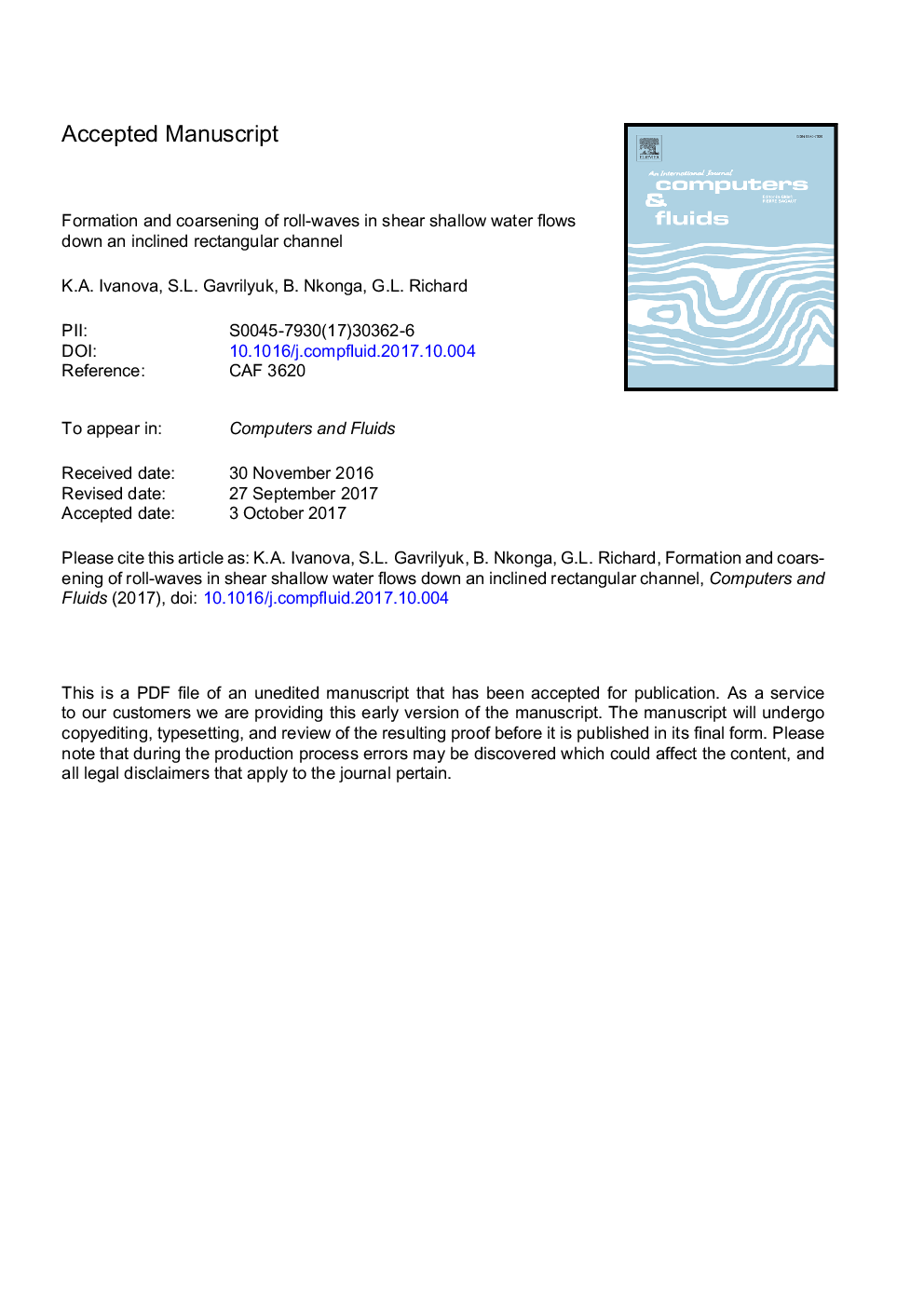| Article ID | Journal | Published Year | Pages | File Type |
|---|---|---|---|---|
| 5011665 | Computers & Fluids | 2017 | 24 Pages |
Abstract
The formation of a periodic roll-wave train in a long channel is studied for two sets of experimental parameters corresponding to Brock's experiments [3], [4] who measured permanent wave profiles by introducing periodic perturbations at the channel inlet. In both cases, a formed free surface profile is found in good agreement with the experimental results. Qualitative properties of solutions to the model are studied in the case where the perturbation frequency is lower than the experimental one, so longer waves are generated at the channel inlet. It is observed that the corresponding roll-wave train is strongly modulated. In the case where the waves of two different lengths are generated at the channel inlet, the coarsening is observed, i.e. the process where shorter waves disappear progressively by transferring their energy to longer waves forming later a regular roll-wave train. The coarsening phenomenon is always accompanied by a strong modulation. A comparison with the Saint-Venant equations is also performed. The formation of a single wave composing a roll-wave train is also studied in a domain with periodic boundary conditions (called “periodic box”) for the same sets of experimental parameters. The free surface profile is found also in good agreement with the experimental results. This allows us to justify the use of the “periodic box” as a simple mathematical tool for a qualitative study of stability of roll-waves. In particular, we study the stability of a single steady wave by increasing its length. It is shown that the wave becomes morphologically unstable after some critical wave length: it bifurcates into a system of two waves. In the framework of a simplified multi-D model of shear shallow water flows it is also proved that a single steady wave is stable under multi-dimensional perturbations.
Related Topics
Physical Sciences and Engineering
Engineering
Computational Mechanics
Authors
K.A. Ivanova, S.L. Gavrilyuk, B. Nkonga, G.L. Richard,
